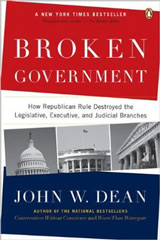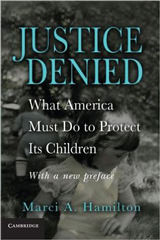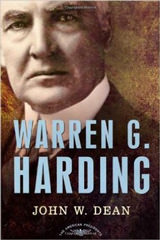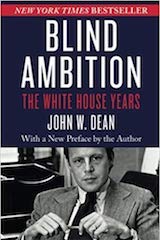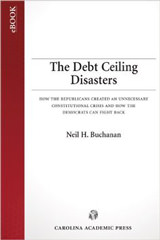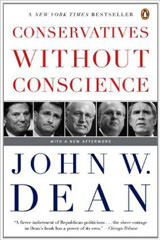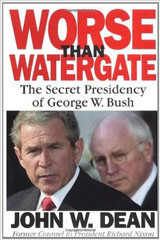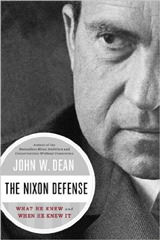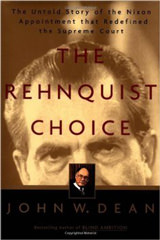Cornell Law professor Michael C. Dorf comments on a case before the U.S. Supreme Court involving a trademark infringement lawsuit by Jack Daniel’s against a maker of dog toys. Professor Dorf points out that while consumer confusion can undermine trademarks, confusion is also a characteristic of effective parody
Cornell law professor Michael C. Dorf comments on a recent decision in which the U.S. Supreme Court held that Congress lacked constitutional authority to enact the Copyright Remedy Clarification Act of 1990, which gives individuals the right to sue a state for damages for copyright infringement. Dorf describes the complexity of the Court’s sovereign immunity doctrine and points out the Court’s peculiar failure to simply invalidate a portion of the statute while severing and preserving the valid portions and/or applications of it—which the Court has done in some other cases.
John Cannan, a research and instructional services librarian at Drexel University Thomas R. Kline School of Law in Philadelphia, critiques a proposal by Congress to enact the Copyright Small-Claims Enforcement Act (CASE), which would create a copyright small claims court through which rights holders would be able to pursue small copyright infringement claims. Cannan argues that CASE would empower copyright trolls and subject nearly every American to hundreds or thousands of dollars worth of legal expenses. Cannan concludes that rather than being a sword for the creative middle class, CASE seems more like a trap for the unwary.
Cornell law professor Michael C. Dorf comments on a decision the U.S. Supreme Court issued this week invalidating a provision of the Lanham Act that prohibited registration of “immoral” and “scandalous” trademarks. Dorf provides a brief history of the legal protection for profane speech and considers the implications of a more precisely worded statute regulating profanity for trademark registration purposes.
Illinois Law dean and professor Vikram David Amar comments on the U.S. Supreme Court’s recent decision in Matal v. Tam, in which the Court struck down as unconstitutional part of the federal trademark registration statute that prohibits registration of disparaging marks. Amar points out that the Court’s decision in Matal is difficult to square with its reasoning and holding in Walker v. Texas Division, Sons of Confederate Soldiers, a case from two years ago in which the Court upheld Texas’s refusal to approve a specialty license plate design that made extensive use of the Confederate flag image.
Chapman University, Fowler School of Law, professor Ronald D. Rotunda comments on the American Bar Association’s assertion of copyright to its Model Rules of Professional Conduct and argues that the association should review its consent decree. As Rotunda argues, the ABA’s fees are at best arbitrary and should not determine (as they presently do) the fees required for reprinting the Model Rules.
Justia columnist and attorney Julie Hilden comments on a recent California Court of Appeals decision that involved a rapper, and an infamous former cocaine dealer. The court held that a person’s name and public persona are First Amendment-protected if they incorporate significant creative elements, and thus count as a transformative use of the original name and/or persona. Hilden argues that the court was correct in its holding in the case.
Justia columnist and Cornell law professor Michael Dorf comments on a very interesting court case regarding intellectual property rights. As Dorf explains, the case concerned Christian Louboutin’s famous red-soled high-heeled shoes, and pitted Louboutin against Yves Saint Laurent. Dorf discusses the reasons a New York-based federal district court ruled against Louboutin, and the reasons a panel of the U.S. Court of Appeals for the Second Circuit reversed and remanded the case. Dorf questions the Second Circuit decision; questions more generally whether the law overprotects intellectual property; and urges that our legal regime must keep in mind the very real risk that the law in this area, rather than protecting creativity, will become a barrier to it. Dorf also briefly discusses the somewhat similar Apple/Samsung dispute.
Justia columnist and attorney Julie Hilden comments on a fair-use case that one judge on the Ninth Circuit panel compared to a telenovela. When a thief stole wedding and wedding-night photos from two Latin American celebrities that revealed that they were secretly married, and had been for several years, a gossip magazine published the photos. The two celebrities then registered their copyrights in the photos, and went to court to enforce them. The magazine, however, mounted a “fair use” defense, in order to try to avoid liability. Hilden describes and comments on the Ninth Circuit decision in the case, which sparked a dissent. Going through the four key fair-use factors one by one, the majority opinion suggests that the magazine has a steep uphill battle in proving fair use, as Hilden notes. Hilden also takes issue with the panel majority’s view that only “pictorial” photographs and those “factual” photographs that depict events should be protected, in this context. She argues that, to the contrary, even mechanical photo-booth photos ought to be protected in such situations.
Justia guest columnist and Temple law professor David Post offers a clear, detailed explanation of SOPA (and similar bills), and the reasons why they eventually failed—and, Post argues, should have failed. As Post explains, SOPA’s aim was to reduce or eliminate access to websites that are dedicated to infringing activities, and are operating outside of U.S. borders. (Such offshore websites offer, for example, copyrighted music or movies for download, or sell knockoffs of trademarked products, all without proper authorization from the rights holder.) Post explains why SOPA failed, noting that it would have done damage to the technical infrastructure of the Internet. For that, and other reasons—including SOPA’s disregard for due process when it comes to foreigners and their sites—Post argues that SOPA’s plan for Internet law enforcement, based on seizing and sanctioning domain names, is deeply flawed.
Justia columnist and attorney Julie Hilden comments on the Supreme Court’s recent decision in Golan v. Holder, which allowed certain works by foreign authors to be pulled out of the U.S.’s public domain, and put under U.S. copyright protection. The works’ status had been changed by statute, so that the U.S. could comply with an international treaty. Drawing heavily on its prior copyright-extension decision in Eldred v. Ashcroft, the Court allowed the works at issue in Golan to be newly subjected to copyright—despite arguments to the contrary that were based on the Copyright and Patent Clause, and on the First Amendment. In dissent, Justice Breyer, joined by Justice Alito, argued that the public-domain works at issue ought to retain their current status, due in part to First Amendment concerns; in part to practical problems, such as problems with “orphan works,” the copyright status of which is difficult and costly to determine; and in part to a utilitarian reading of the Clause.
Justia columnist and U. Washington law professor Anita Ramasastry points out that even if we are using the “If I Die” app, which allows Facebook users to send a final message to loved ones, there are many other aspects of our digital lives that will also need attention when we die, and for which we should also plan. Ramasastry covers the provisions for user death in the Terms of Service (ToS) of popular online services such as Yahoo!, Gmail, Facebook, Apple, and YouTube. She also considers questions relating to the inheritance of digital property ranging from copyrighted online work, to virtual property with real-world value. Ramasastry also comments on why one might want to use a “digital undertaker” service; on the need to amend states’ law across the country in order to protect virtual property; and on the state-law question whether the rights of privacy and publicity can—and should—survive a person’s death.

















